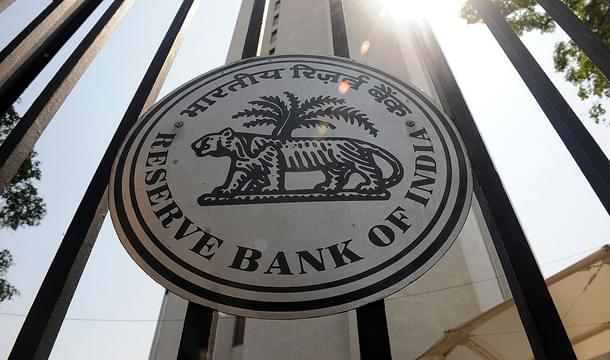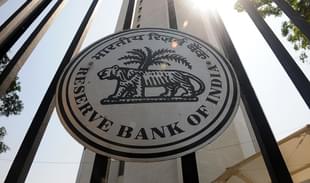Economy
Should Central Banks Issue Their Own Digital Currency?
Brihaspati
Sep 24, 2017, 10:55 AM | Updated 10:55 AM IST
Save & read from anywhere!
Bookmark stories for easy access on any device or the Swarajya app.


Nothing in this universe remains constant. Money is no exception. There was a time when it used to be in the form of coins. Then paper money took over. And now there is digital currency. Meanwhile, thanks to electronic banking transactions which have speeded up the velocity of circulation of money, no one really knows what it actually is, other than purchasing power.
This aspect of money – what is it? – was explicitly recognised by an economist called R A Radford 72 years ago. He had been a prisoner of war during the Second World War and he wrote about how cigarettes had become money in the camp. The paper was called ‘The Economic Organisation of a POW Camp’.
The price of everything was determined in terms of the number of cigarettes, and scarcity was accurately reflected. The issuing authority of the cigarettes was the prison administration, just as a central bank is for money. They controlled its supply, which in turn determined prices and borrowing rates – all expressed in terms of cigarettes, of course.
The new money which is now slowly making its presence felt and causing worry for central banks is – or should be – is ‘bitcoins’. This is digital money invented by a Japanese genius called Satoshi Nakamoto.
According to Wikipedia, bitcoins are issued “as a reward for payment processing work in which users offer their computing power to verify and record payments into a public ledger ... bitcoins can be exchanged for other currencies, products, and services. Users can send and receive bitcoins for an optional transaction fee.”
The key feature of bitcoins is that they don’t need an intermediary like a central bank. Everything is between the principals, or as they are known, peer-to-peer transactions.
Every currency has an exchange rate and those with money – cash or bank account – can obtain the equivalent number of bitcoins. The question now is: how soon will these replace traditional currency and should that happen, what will, and should, central banks do?
Central Banks And Bitcoins
A research paper called ‘Central Bank Digital Currency and the Future of Central Banks’ written by two America-based economists has gone into this question. The authors Michael D Bordo and Andrew T Levin say that central banks should issue digital currencies (CBDC) because of several advantages.
For one thing, they can be almost costless as a medium of exchange – as opposed to paper currency which is quite costly to print. Digital currency could also serve some of the other functions currency should, such as being a secure store of value and a stable unit of account.
The fundamental difference between CBDCs and other virtual currencies like bitcoin, is that the former are backed by the central bank and so enjoy the benefits that come with that sanction – they would be fixed in nominal terms, universally accessible, and valid as legal tender for all public and private transactions. This is key, since it will protect the currency from the wild swings seen in the other virtual currencies.
The authors note that central banks have historically not been known for their alacrity in adopting anything new, but that recent years have seen a “remarkable array of unconventional monetary policy tools” being implemented. In keeping with this, the report suggests central banks adopt an active approach to the adoption of a digital currency of their own.
The argument is that there are several inherent dangers to a passive approach to these currencies because, if not actively controlled, the other virtual currencies will become the default mediums of exchange, which would then have knock-on effects on the economic and fiscal stability.
Act Proactively
For example, the authors portray a scenario, where paper currency has become obsolete but the central bank has not issued a digital currency of its own. Under these assumptions, the paper finds that economy would be exposed to significant instability as there might not be an equilibrium price level that can be established. In contrast, a CBDC would bring with it the stability of the central bank.
The paper also says that the removal of paper currency without a central bank alternative would result in a loss of monetary control. The authors ask whether the interest rate on reserves will stay tightly linked to market interest rates, which is what currently allows the central bank to tweak monetary conditions as needed.
Of course, another problem with the central bank not having its own digital currency is the system risk from the possibility of another currency gaining a monopoly. What happens when the infrastructure behind that currency fails?
“In light of these considerations, a passive and inertial approach towards CBDC may not be the most prudent strategy,” the paper notes. “Rather, many central banks are now moving expeditiously in considering CBDC and in investigating its logistical and technical details.”
One must ask if the Reserve Bank of India is at all giving any thought to this. It has a reputation for being well behind the curve but the least its Governor, Urjit Patel, could do is to set up a task force to go into pros and cons of bitcoins.
And if this has already been done, it could tell us about it.





